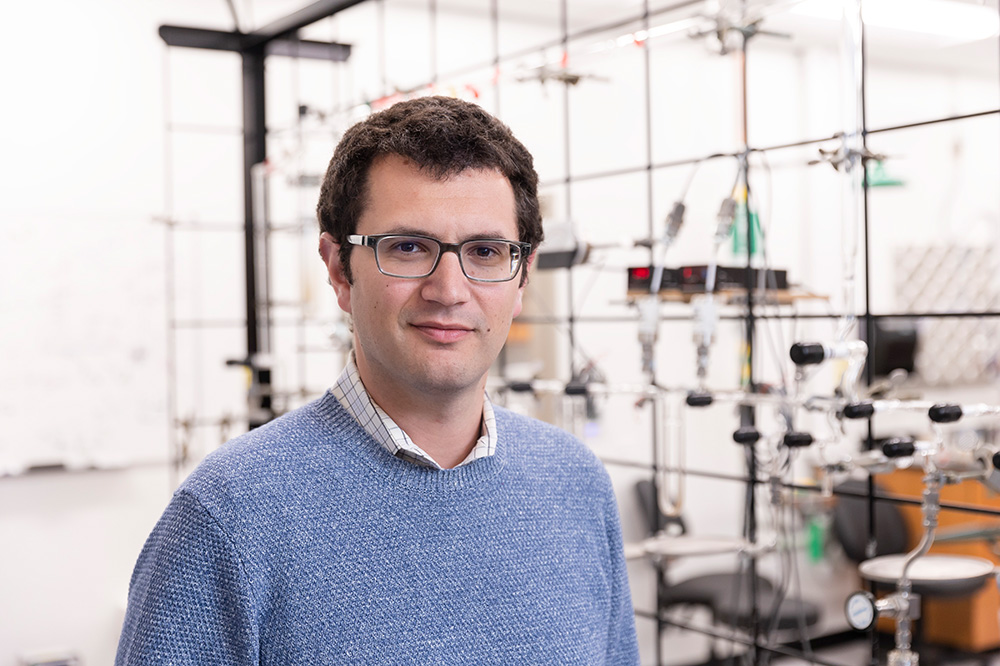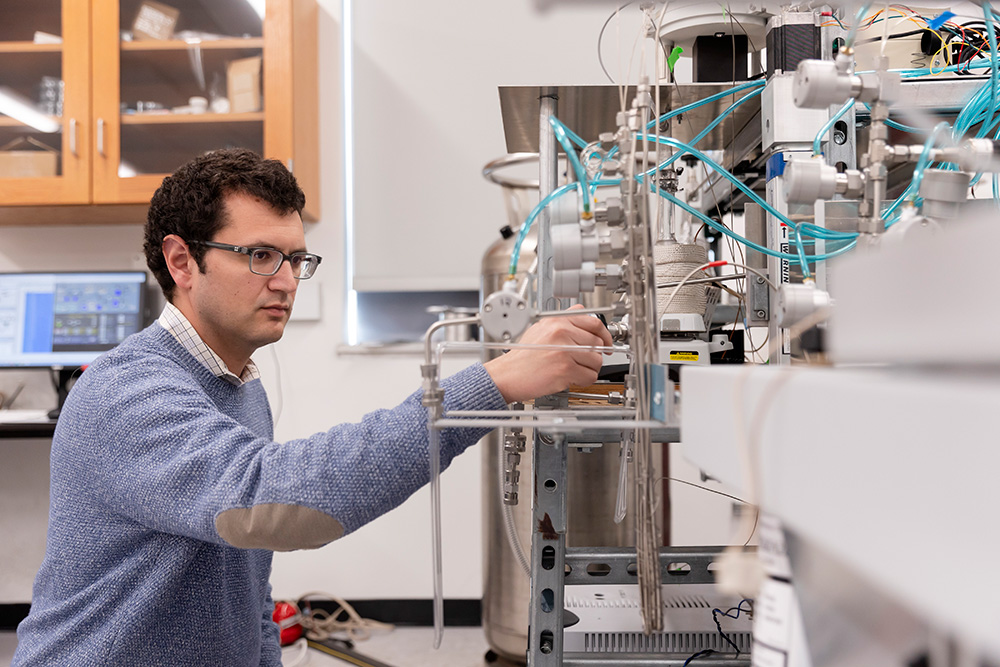Wood as a Window Into the Past
Daniel Stolper, a 2023 Heising-Simons Faculty Fellow, is analyzing the chemical composition of ancient wood to learn about Earth’s climatic past.

A chunk of fossilized wood has stories to tell. In the atoms and chemical bonds that compose it lie secrets about not only the history of plant life, but the history of our planet. By purifying and precisely measuring the chemical signatures from ancient wood, Berkeley professor Daniel Stolper hopes to learn about the Earth’s climatic past.
Stolper’s lab in the Department of Earth and Planetary Science analyzes a variety of ancient and modern materials — including air, natural gas, rocks, shells and deep-ocean sediments— to gain insight into how the planet has changed over the eons of its existence. With a 2023 Heising-Simons Faculty Fellow award, Stolper is tackling a new problem: how to use wood to measure the humidity of years gone by.
“It turns out we do not know nearly as much about the history of relative humidity over Earth’s history as compared to other key climate variables like temperature and atmospheric composition,” Stolper says. “But this is an important measurement; how dry the world is influences many aspects of the biosphere.”
Many elements on Earth exist in multiple forms, with the same number of protons — giving them the same chemical properties — but different numbers of neutrons, affecting their mass. The ratio of these isotopes can convey valuable information; it underlies radiocarbon dating of ancient materials, for instance.
The humidity of the air, it turns out, impacts the balance of oxygen isotopes that are ultimately stored in wood as a plant grows. Stolper has an idea on a new way to measure oxygen isotopes in ancient wood — and hence the humidity in the atmosphere when the wood was first formed.
“This could help answer a lot of historical questions,” Stolper says. “As an example, one of the suggested contributors to the collapse of the Lowland Classic Maya civilization was the occurrence of major droughts and associated local climate change. Knowing the humidity at the time could help archeologists study this important time period.”
Stolper didn’t always plan to pursue research with these kinds of historical implications. As an undergraduate at Harvard, he initially planned to major in chemistry and wanted to eventually pursue veterinary medicine. But an Earth Science class changed his plans.
“There was a feeling of excitement in these classes that I didn’t always get from other science classes,” Stolper remembers. “And a lot of it was because there were still very basic things being discovered about Earth’s history.”
Stolper joined a lab at Harvard and studied deep-sea organisms that consume methane to survive. After graduation, he won a Fulbright scholarship to study for a year in Denmark, where he worked with scientists studying the lowest levels of oxygen at which life on Earth can survive.
Intrigued by this intersection of biology and earth science, Stolper went to Caltech for graduate school in the field of geobiology where he focused on measuring isotopes of different elements.
While pursuing his PhD, Stolper developed a new isotopic technique to determine the formation temperature of methane. Now, his lab at Berkeley develops other, similar sorts of isotopic techniques.
“I really enjoy developing new methods as they have the potential to lead to discoveries,” says Stolper.
Today, he is developing a measurement to serve as a ‘paleohygrometer’ (paleo- for ancient and -hygrometer for an instrument which measures humidity) and testing it using relatively modern wood, which formed in known humidity conditions, so that he can fine-tune the approach. What Stolper already knows is that as water evaporates from plant leaves, the surrounding humidity impacts the balance of three oxygen isotopes — 16O, 17O and 18O — in the water left behind in the leaf. Although ancient water is not preserved in the fossil record, these oxygen atoms get integrated into wood and can be measured and use as a proxy for the isotopic composition of ancient leaf water. Stolper’s paleohygrometer technique aims to detect the balance of oxygen isotopes in wood and work backwards to determine past humidity.

If his technique works, Stolper plans to use it to study the humidity in geologic past during times of both colder climates – like glacial periods – and warmer climates than today, when palm trees grew in the Arctic. It’s the kind of basic question on the frontier of Earth history that he’s always wanted to answer.
“I hope that people looking at Earth science realize there are still basic questions out there waiting to be answered,” he says. “It remains an exciting field.”
